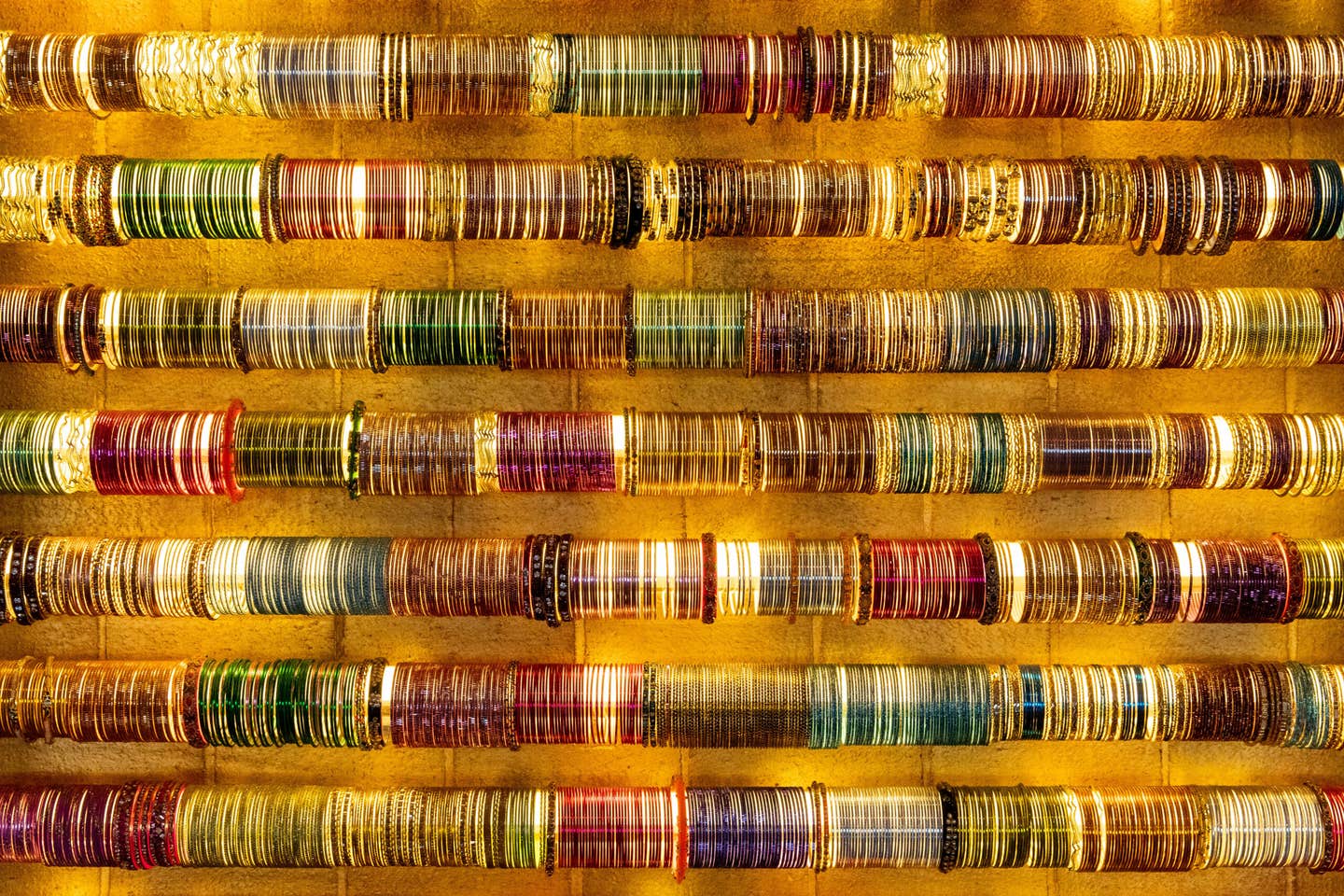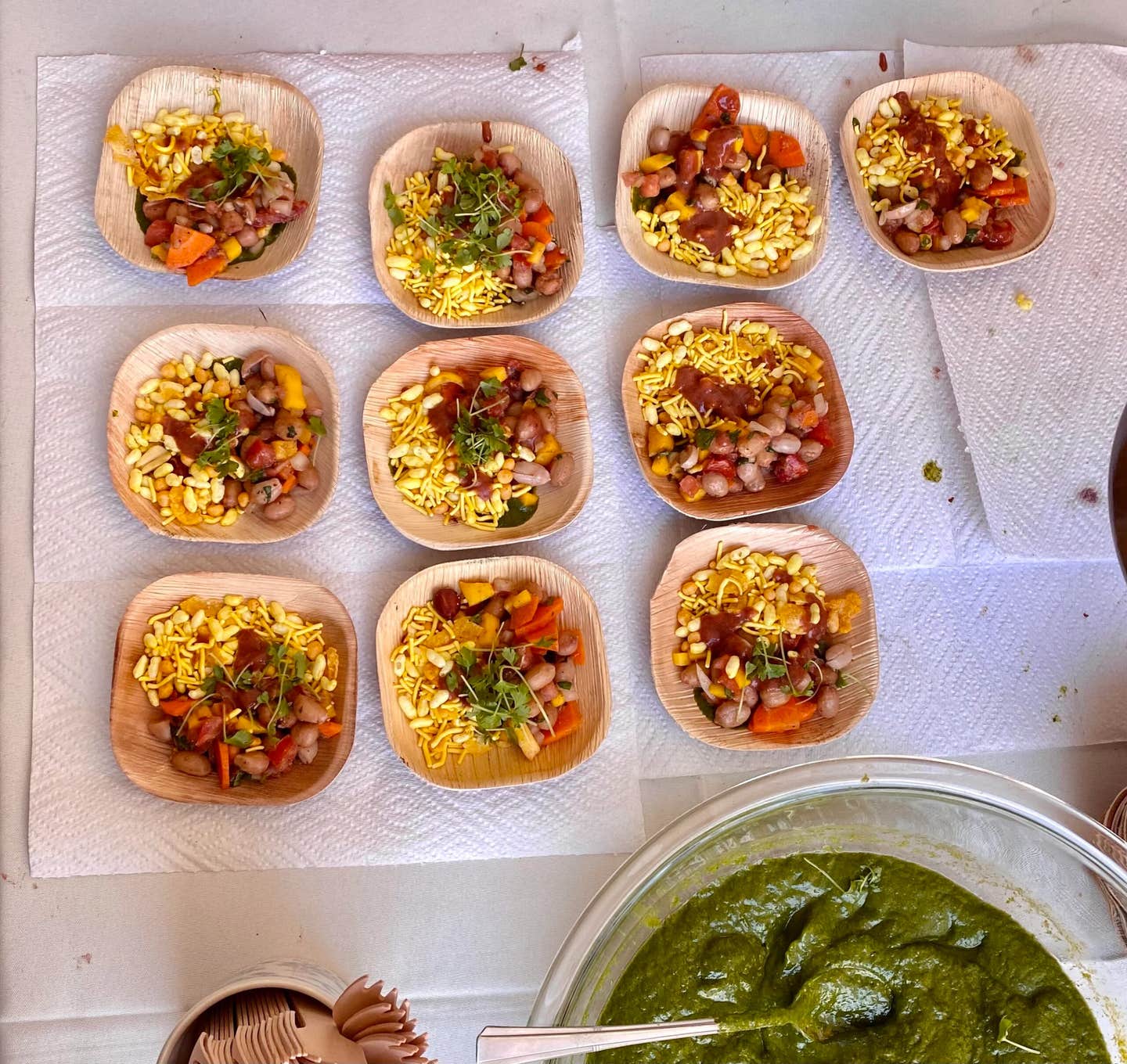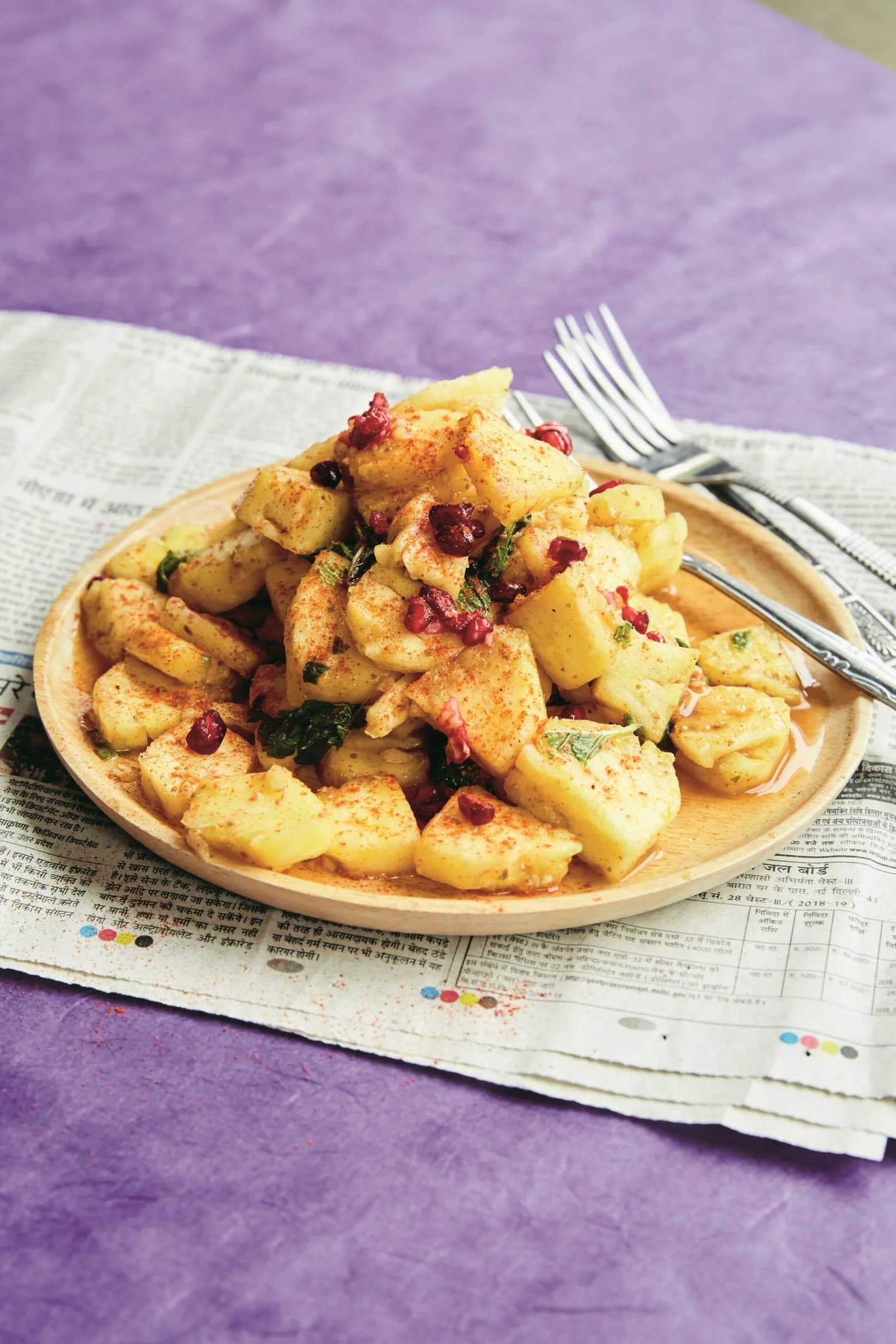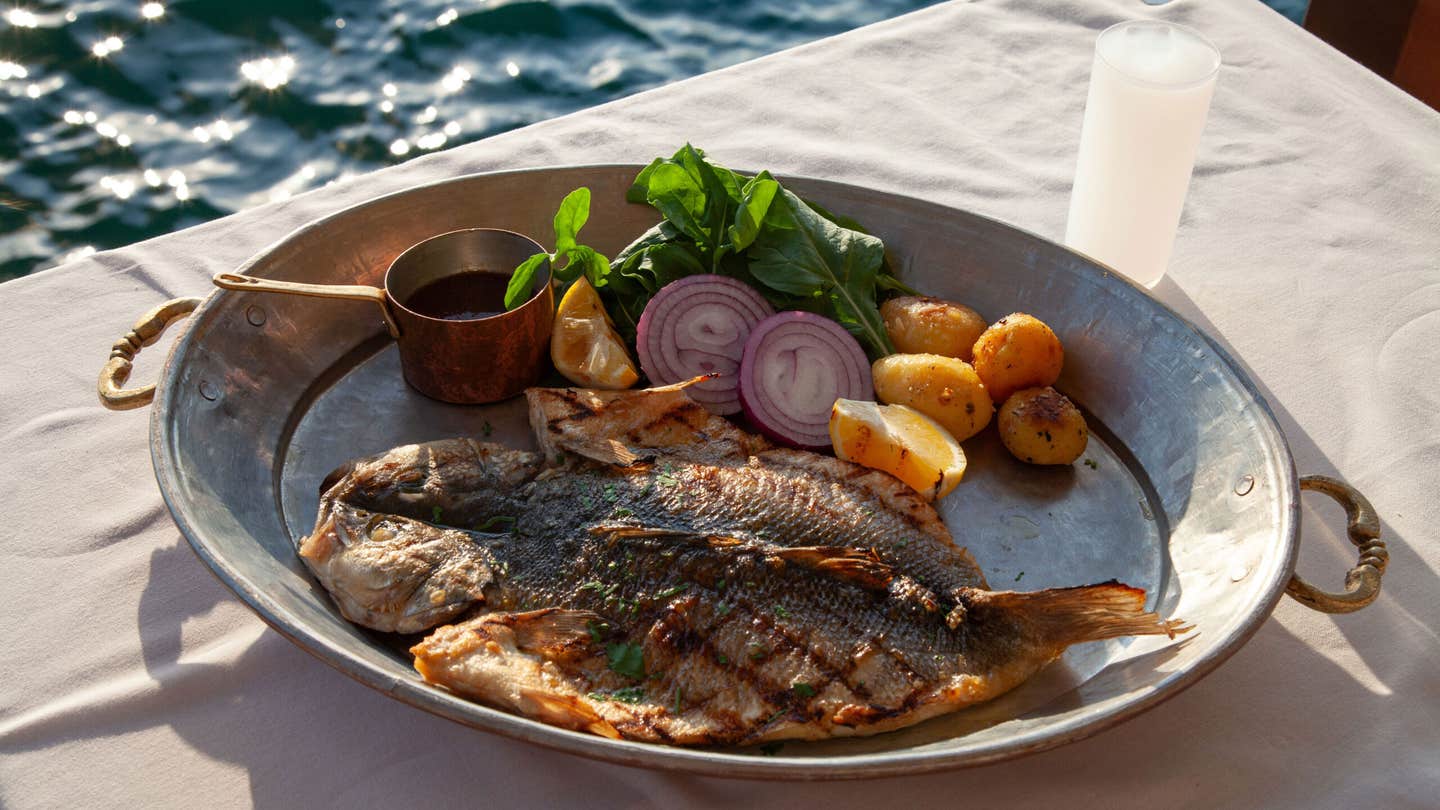
Our Favorite Fruit Snack
Maneet Chauhan’s pineapple chaat is an irresistible introduction to making Indian street foods at home.
A monthly column showcasing some of the best bites the country has to offer, Best Thing I Ate This Month celebrates American cuisine. Delve into cookbooks, home kitchens, diners, and fine-dining: Food in the United States is delicious, and this is a reminder of the good eats right down the street—or on your very own stove.
“Chaats are a mighty snack that tell India’s culinary story more adeptly than any other food,” writes chef Maneet Chauhan in her recent cookbook, Chaat. “Every chaat tells a story about the resourcefulness of the Indian people, the history of our nation, and in my opinion …. they are the very best cuisine that India has to offer.”
Just as India is full of diverse cooking traditions and regional specialties, so too is the category of chaats, a broad designation of snacks and pick-up meals served in the country’s markets, train stations, and home kitchens. The small bites may be composed of legumes, puffed rice, chutneys, fruit, fried meat, and assorted vegetables, all in varying textures and temperatures, but each should encompass the layering of sweet, salty, tart, and spicy flavors. It’s the idea of a universe of flavor in every bite.

“Chaat, literally translated, means ‘to lick,’ ” says Chauhan. “Almost like licking the bottom of the bowl.” And that’s exactly how I felt when I took a bite of her pineapple chaat that I recently made in my own kitchen. It was layered with flavor: sweet and sour, spicy and fresh—and I wanted another bite, and another.
Nationally recognized as a judge on Food Network’s Chopped (for which she won a James Beard award), Chauhan graduated at the top of her class at the Welcomgroup Graduate School of Hotel Administration, India's top culinary and hotel management school. Along with her husband Vivek Deora and partner Kevin Woods, she runs Morph Hospitality Group in Nashville which includes Chauhan Ale & Masala House, Tansuo, The Mockingbird, and her newest restaurant, Chaatable.

Chaatable’s opening coincided with the publication of her recent cookbook, and is located in Nashville’s Sylvan Heights neighborhood. Iconic regional chaats such as samosas and pani puri, as well as her own creative variations, rotate on a seasonal menu to buzzing crowds of diners. The restaurant is a smorgasbord of color, texture, and bedazzlement, with Chauhan in the center, expediting orders from the kitchen, greeting guests, and jumping behind the line as needed. But before she was a chef, a restaurateur, and a television celebrity, she was a chaat lover.
“Chaats are something I grew up with,” she says. “They take me back to being young. They were street food and [our parents] wouldn’t always want us eating them. But I was obsessed.” Chauhan recalls from childhood a machete-wielding chatwallah who “would cut the pineapple right in front of you and mix it with the lime juice and the spices,” before serving the fruity mix in disposable cups made of leaves.
That obsession led Chauhan to travel with co-author Jody Eddy to eat and document as many regional chaats as possible with the aim of adapting the recipes for a book. The pineapple chaat I made at home came from the Hyderabadi train station in Southern India, she tells me.

Preparing the dish at home is simple. This chaat is essentially a fruit salad and preparation is mostly chopping and tossing. The result is sweet, sour, salty, and spicy, refreshed with mint and anchored by the tropical flavor of pineapple. Even with limited local shopping choices, the only ingredient you may have trouble finding at a major supermarket is chaat masala (thankfully, Spicewalla sells an excellent version online).
Chauhan asserts that this dish’s hidden power is its versatility. In the headnote to the recipe, she mentions that she makes similar versions with mango or watermelon when in season, and occasionally drizzles the chaat with salted and thinned yogurt for an added twang. When we talk, she goes even further: “This is a great side for barbecued meats here in the South, and you can use it to top sorbet, or seafood. We’ve even made it into a cocktail with rum.”
I’ve loved eating chaats for years—pani puri is my favorite thus far—but as someone just entering the world of preparing chaats at home, that flexibility is a joy to hear. Chauhan notes that this recipe is a great place to begin your study of the category’s foundational flavors and layered textures.
“The chatwallahs were not formally trained,” she goes on, “but the fact that they perfected the art of one dish, dedicated their livelihood to it, I think that seeing that dedication played an important part of me becoming a chef.” And through Chauhan’s book, we can ourselves become dedicated to the joy of layering flavor, all starting with a fresh pineapple chaat.
Keep Reading
Continue to Next Story










